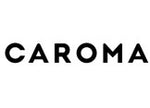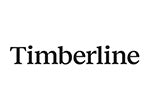Shop our range of indoor fans, including fans with/without lights & DC fans

Australia's Largest Online
Over 1M+ products shipped
60 day extended returns
Suitable for a living room or entertaining space, large fans are a grand fixture to the home
For smaller spaces or low ceilings, low profile fans hang close to the roof for a sleek finish
Stunning external fans for an outdoor setting, adding a luxe finish to any home
Choosing the right indoor/outdoor fans for your space can be an overwhelming decision. However, we have taken the stress out of selection with our handy blog filled with tips & tricks to find the perfect fan for your next renovation or home improvement job! Check it out!
The ideal height a fan should sit is 2.1 - 2.7m from floor to blades - the closer you are positioned to the fan, the stronger you will feel the breeze. Note that a safety clearance of at least 2.1m from blades to floor is required for safety.
The main types of motors in ceiling fans are AC or DC motors. The AC (alternative current) or DC (direct current) refers to the electrical current the motor uses. Homes in Australia typically use AC power however DC ceiling fans can also connect to Australian wiring. DC Fans have an internal adaptor that converts the AC power into DC power to operate the fan.
AC fans are the most conventional type of fan and have been around for a while. AC fans tend to be relatively more cost-effective to buy than DC fans as they have simpler production and are more conventional in the market. DC fans are highly energy efficient, the motors consume up to 58% less energy than conventional motors and are more cost-effective to run.
Yes! For AC and DC Fans in most cases, ceiling fans run off less or the equivalent of a standard (60W) light bulb. You can also further save energy by adjusting the speed function on your fan to low speed. To further reduce energy consumption, look for DC models as they are highly energy efficient.
While we often utilise our fans during the hot summers, many do not realise that ceiling fans may also be used during Winter as well. Luckily, our fans offer this function! The reverse function can be found on all of our fans and is found as a switch on the side of the fan or on the remote control.
In reverse/"Winter" mode, the ceiling fan will gently draw warmer air down from the ceiling level to balance the room temperature. This is beneficial as it means you can reduce the use of other appliances to heat the home and therefore save energy and power bills.
Ceiling fans can be controlled via a wall control or remote control depending on the type of motor the fan is powered by. AC fans come with wall controls included, however, a remote control can also be purchased as an accessory to control the fan. AC Fans can also be controlled via a smart wall controller which will convert an AC fan and make it a Smart Fan that can be wall or app controlled. DC fans come with remote controls included and are the only option for control.
All available accessories are listed on each product via the drop-down menus.
Fans with a coastal rating are perfect for coastal areas where the fan is exposed to sea air and can be susceptible to corrosion. Not to be confused with outdoor fans that only have some protection against the elements.
For high ceilings, extension rods may be required if your ceilings are higher than 3m or more to allow the fan to be in the most effective position. Extension rods can be purchased as an add-on accessory on our site. Fan extension rods generally come in a 900mm or 1800mm size, but don’t worry if they don't fit your measurements exactly, they can easily be cut by your electrician to meet your exact needs. Please be mindful of the height safety clearance of 2.1m from floor to blades.
For low ceilings - bearing in mind the clearance of 2.1m - it is recommended to go with a fan with a shallow fan drop (under 300mm) which would work with most standard ceiling heights in Australia (2.4m). Fans that fall under this threshold are usually labelled as low-profile fans. Shop our collection of low-profile fans for your low ceilings.
For raked ceilings, it is important to measure the angle of your ceiling. Based on the angle, you should refer to the maximum pitch angle that the fan canopy can be tilted to see if your fan is suitable. Look for fans with a canopy and rod - most of these fans have a ball joint that allows you to adjust the angle of your fan to suit your ceiling. Fans can be extended with extension rods to ensure the right level of clearance is allowed for the height of your fan and also the rotation of its blades.


Switch to your local store for faster shipping and local deals.










